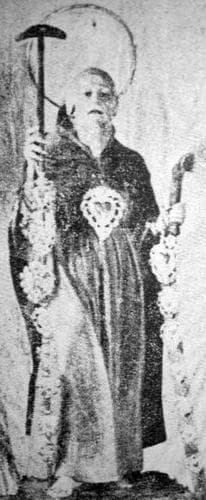
Blessed Adam Of Cantalupo In Sabina
Blessed
Feast Day: May 3
Biography
Blessed Adam of Cantalupo in Sabina, also known as Adamo, was a revered 11th-century monk and hermit who embodied the true essence of Christian devotion and selflessness. Born amidst the tumultuous times in Cantalupo in Sabina, Italy, precise details about his birth and early life are unfortunately unknown, shrouded in the mists of time. However, what remains ingrained in history are the remarkable achievements and miracles attributed to this remarkable saint.
During the 11th century, Cantalupo in Sabina fell victim to the ravages of invading Saracens, who mercilessly destroyed numerous churches and left the community in despair. Recognizing the immense devastation and spiritual vacuum that engulfed his hometown, Adamo decided to take it upon himself to rebuild these sacred places. Fueled by his deep faith and guided by a profound sense of duty, he dedicated years to the laborious task of resurrecting the sanctuaries that held great significance for the local population. Armed with his unwavering devotion and indomitable spirit, Adamo defied the threats and dangers that impeded his mission, ultimately restoring these sacred sites to their former glory.
However, it was not merely through his physical efforts that Blessed Adam of Cantalupo in Sabina left an indelible mark on his community. His exemplary piety and holiness granted him the reputation of being a miracle worker, whose intercession brought forth numerous graces and blessings to those who sought his aid and guidance. It is said that countless hearts were touched, and souls were uplifted through his prayers, leading to the profound spiritual conversion of many.
In visual representations, Blessed Adam is often depicted as an elderly bald man with a thick white beard, reminiscent of the wisdom and serenity that emanated from him. His humble attire as a monk represents his renunciation of worldly desires, while the hammer clasped in his right hand symbolizes his tireless efforts in rebuilding the churches. Additionally, Adamo is depicted holding a farming tool, alluding to his connection with the land and a life of simplicity. Strings of hearts adorning his person are indicative of the graces received by those who have sought his intercession.
While the exact details of his birth, death, and the rec